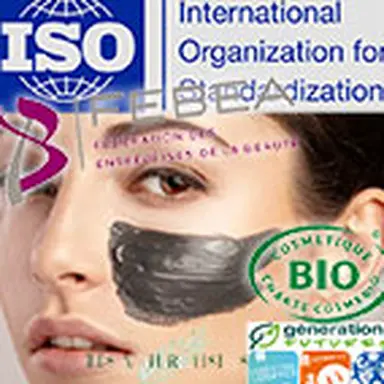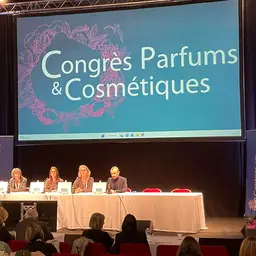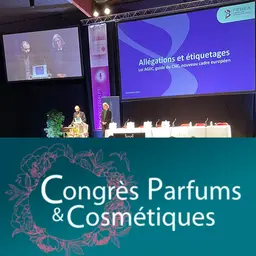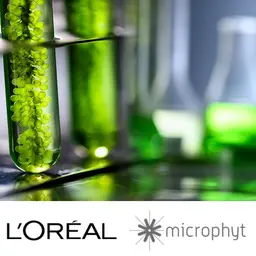
The second part of standard ISO 16128 was published in late September 2017. This means the ‘Guidelines on technical definitions and criteria for natural and organic cosmetic ingredients and products’ have become the world reference in this field – within a very contentious context, at least in France. To make an objective judgment on this case, CosmeticOBS made an update on what this standard is… and is not.
On September 29, a number of associations (Générations Futures, Génération Cobayes, WECF, Les Naturalistas, and above all, Cosmébio) organized a press conference to warn people about standard ISO 16128, ‘a Pandora’s box that may conceal a global deception on the international level,’ as Cosmébio President Romain Ruth put it.
The day before, FEBEA (French Federation of Beauty Companies) had published a press release, delighted about the fact that ‘global cosmetics players finally speak the same language, thanks to this first harmonization text on natural and organic ingredients.’ Major hazard or great progress? These two standpoints are completely opposite and involve a few misunderstandings which make the debate and issues at stake a little obscure for novices. Here are a few explanations.
What is a standard?
According to the French Larousse dictionary, a standard is a ‘rule that sets out the conditions for performing an operation, executing an object, or developing a product to be used the same way by everyone or meant to be interchangeable. International standardization work is done by the International Organization for Standardization, commonly known as ISO.’
A standard is set up following a very well-defined process and published after discussions involving representatives from all around the world, once a consensus has been reached. Then, it becomes an international reference. It should be said that a standard does not need to be ‘adopted’ or ‘enforced’: once it has been published, it becomes a reference.
It can become mandatory if it is used in a legislative text, but it is usually applied on a voluntary basis. In any case, it is a tool for manufacturers compliant with it to provide evidence of their good practices, and for authorities to carry out their controls based on a harmonized text.
Standard ISO 16128
This standard originates from the will to set out a unique framework that would define what natural and organic cosmetic ingredients and products are. Until it was published, only private labels had set up standards on this issue, but they benefit from no international recognition whatsoever, and they have no legal force.
A standard for conventional cosmetics?
First controversial aspect: to the representatives of labelled organic cosmetics, the standard was set up by and for the conventional industry to help it enter this very promising market more easily by producing cheap-rate natural cosmetics.
‘There was an overrepresentation of conventional cosmetics players in the French delegation,’ Romain Ruth emphasized . ‘It should be known that you had to pay to participate in the discussions, which made it harder for small players to get involved. Cosmébio, Ecocert, and Cosmos were represented, and we tried to take part in this as healthily as possible to push for a clearer, non-deceptive natural cosmetics industry, but at one point we had to slam the door shut, because we considered conventional representatives did not listen to historical organic players.’
‘The initial idea of harmonizing practices was a good one,’ added Pierre Charlier de Chily, who took part in the ISO discussions for Cosmébio. ‘Usually, ISO discussions consist in trying to agree on the best existing industry practices. As a matter of fact, things were done the wrong way around: we should have started with us, with what is done in Europe. But that is not what happened.’
In an interview by CosmeticOBS, Anne Dux, FEBEA’s representative in the discussions, explained that ‘French organic labels wanted their own specifications to be adopted. The thing is, they only represent a small part of what we have in Europe. As a matter of fact, a standard is a consensus between all world regions, and some of them or certain stakeholders in Europe did not want their standards.’
From this standpoint, the idea was not to make the conventional industry prevail to the detriment of well-established organic players, but to take into account the real complexity of discussions expected to result in an agreement between many global participants with very different perceptions of naturalness and very different stories (Read more: Natural and organic cosmetics: the stakes involved in the future ISO standard).
Standard content
The ISO 16128 standard is divided into two.
Published in 2016, the first part is dedicated to the definition of ingredients and the criteria according to which an ingredient may be considered ‘organic’, ‘derived organic’, ‘natural’, and ‘derived natural.’
The second part, which was published recently, in September 2017, provides for the methods of calculation to establish the natural and/or organic indices of the ingredients, resulting in the percentages of natural and organic ingredients in a finished product.
Non-natural naturalness?
Second controversial aspect: the representatives of labelled organic cosmetics denounce ‘the many secret niches that make it possible to add almost anything to a product presented as natural.’
Pseudo-natural ingredients?
Three ingredients illustrate the fear of ‘fake naturalness’.
• Silicones
The standard text shows (and even if the example featured in the preliminary versions of the text disappeared in the final version published) that a silicone oil made with 70% of natural sand may be labelled with a natural index of 0.7.
To Romain Ruth, ‘it is absolutely counter-intuitive for consumers to consider silicones can be natural ingredients!’
• Denatured alcohol
‘How can denatured alcohol – possibly with diethyl phthalate – be added to a product claimed to be natural?’ Cosmébio asked, indignant.
‘Alcohol denaturants are authorized if they are mandatory for fiscal reasons,’ explains FEBEA.
• GMOs
‘Our values make it impossible for us to accept an ingredient derived from a GMO in Cosmébio-labelled products,’ reiterated Pierre Charlier de Chily, ‘and yet they will be counted as natural ingredients in products compliant with the ISO standard!’
The standard actually states that ‘the ingredients derived from genetically modified plants may be considered as natural ingredients in certain regions of the world.’
However, FEBEA emphasizes the fact that ‘GMOs are authorized only in the regions of the world that allow for them. As a result, they are not authorized in the European Union.’
They add that this rule also applies to products manufactured outside Europe, which cannot be imported to the EU if they contain GMOs.
No natural or organic thresholds: is greenwashing being legitimated?
‘Today, we do not know exactly how most industrials will refer to this standard, but we can guess a certain form of marketing creativity will contribute to creating real “pseudo-natural” and falsely organic products. There is truly a risk of greenwashing,’ Romain Ruth warned.
It is true the standard does not provide for any minimum percentage of natural or organic ingredients to define whether the product is natural or organic.
‘This standard is not aimed to make a judgment on product claims or to be a label. In fact, it is not intended to specify the conditions under which a product can be qualified as natural or organic…’, FEBEA explains.
Guarantees in France
However, Anne Dux reiterated that ‘France is the only country that has regulations for natural and organic cosmetics claims. Under the ARPP rules (French advertizing self-regulatory organization), it had been known since 2012 that a cosmetic product could be claimed to be natural only if it contained at least 95% of natural or derived natural ingredients, and that an “organic” product should contain 100% of organic ingredients or comply with specifications, without the need to display the logo of a particular standard – except no one knew what “natural” or “organic origin” meant. That is what the standard says, and that is it, apart from how to calculate the percentages of natural and organic ingredients.’ The FEBEA representative also emphasized the fact that this applies to all products available on the French market, whether they are manufactured in France or anywhere else around the world, since French regulations apply to all products offered to French consumers.
In short, to her, standard ISO 16128 will not change anything about this particular aspect.
What about the future in Europe?
The equivalent of a label or at least rules similar to those in force in France might come from Europe. ‘The European Commission was waiting for this standard to be published to set up regulations on claims regarding natural and organic products,’ Anne Dux reiterated. ‘But no matter what criteria the Commission adopts to define a natural product, whether they require 95% or 99% of natural ingredients, the standard will not change, since it only determines how the calculation should be made.’
No banned ingredients: is the door open to all kinds of abuses?
‘Even if you put aside the issue of minimum thresholds of natural ingredients, with the standard, it is possible to use controversial preservatives, synthetic perfumes, petrochemical solvents, polluting chemicals… in cosmetics that will be qualified as natural or organic as from tomorrow! And this type of products backed by the conventional industry will flood mass distribution shelves in the weeks to come,’ Romain Ruth denounced.
It is true ‘the standard is not meant to specify whether ingredients will be authorized or banned in natural and organic products,’ the FEBEA’s release mentions.
This means synthetic ingredients can be added to them if they do not represent more than a percentage of 5% of the product, at least in France.
‘That is exactly what organic standards provide for,’ Anne Dux insisted, ‘and they also accept synthetic preservatives to protect products!’
Cosmébio Director Valérie Marcadet qualified these words, since the Cosmébio charter comprises a black list of banned ingredients: ‘there is a high risk we will end up with products with 95% of natural ingredients on the market, the rest being all the harmful ingredients we are trying to avoid, like diethyl phthalate in denatured alcohol, silicones, preservatives consumers do not want anymore… There is a high risk of confusion for consumers, who will find real natural products and fake natural products side by side in-store, although they will be presented the same way’…
‘We are not trying to defend a private territory, our sector is healthy and we are not experiencing any growth difficulties. Our consumers know perfectly well the Cosmébio label means something and represents values. But we need to inform consumers, especially those that do not know much about organic products, in particular abroad, so that they know what the standard conceals – it can actually be a global deception,’ Romain Ruth added.
A lack of transparency in the rules?
Third controversial aspect: the representatives of labelled organic cosmetics denounce an organized lack of clarity to the detriment of good information for consumers.
A standard kept secret?
Just like all ISO standards, standard ISO 16128 is only available through paid access. The 1st part costs 58 Swiss francs (about €50), the 2nd 88 Swiss francs (about €77), while organic cosmetics standards can be consulted for free. There is no doubt it is an obstacle to free access to information for consumers willing to read the original text to judge the content themselves.
To contribute to this article and eager not to prevent verified information from being released, AFNOR (French standardization association) has made a copy of the two parts of the standard available to CosmeticOBS for free – we do not have the right to publish or reproduce them.
Are the methods of calculation not clear enough?
‘Calculations are not clear, in particular for the organic ingredient index, and there are still technical documents missing to make them more explicit,’ Pierre Charlier de Chily explained.
Anne Dux confirms that: ‘Two technical documents will complete the standard to specify the methods of calculations, one on hydrolates, the other on the concentration and dilution operations performed afterwards.’
Plant extracts
There is a particular point that is problematic, and it is that of plant extracts.
For example, an organic plant placed in an organic vegetable oil produces an oily macerate: everyone agrees the macerate is fully organic.
But there is a problem with aqueous extracts, in particular floral waters and hydrolates.
When you place a dried organic plant in water, you get an extract. Again, everyone agrees part of the water becomes organic (the one that is used to rehydrate the plant and replaces the water that constituted the initial plant). The problem is how to calculate the quantity of organic material contained in the final extract.
According to Anne Dux, ‘the most logical approach would be to analyze the composition of the final extract to measure what is left of the plant extract, which makes up the organic part. But that would mean the organic water part would not be taken into account… and we cannot separate it from the natural water. To break this deadlock, the standard considers the final organic part corresponds to the organic input. This means that in a plant extract, the quantity of organic material introduced divided by the total weight introduced = organic coefficient of the extract*. The COSMOS standard uses a different formula: it is the organic weight introduced that is divided by the weight of the final extract, which results in the organic part being bigger! Who is talking about greenwashing?’
| An example with figures* | |
|---|---|
|
If 80 kg of plant in 800 kg of water give 600 kg of extract • COSMOS formula: 80/600 = 0.13% organic • Standard formula: 80/880 = 0.09% organic |
|
|
*The formula was simplified in this example: the standard actually takes into account the specific values of the extraction water and reconstitution water… |
Calculations with or without water
Water itself is a problem.
‘It took three years to decide water was natural, when certain parts of the world wanted it to be considered neutral and excluded from the calculations,’ Anne Dux reiterates.
‘In France, organic cosmetics standards include water in their calculations. But the Americans asked for the standard to provide for the possibility to make the calculations with or without the water.’
What are the consequences in practice? If you include the water used for the formulation (natural water), which represents a major part of cosmetics formulas, the percentage of natural ingredients strongly increases. If you exclude the water from the calculation, this time it is the percentage of organic ingredients that is boosted!
| Example for a finished product under ISO 16128 | |
|---|---|
|
Natural content • With water: 83.4% • Without water: 58.5% |
Derived organic content • With water: 12.2% • Without water: 30.5% |
More confusing labels?
How will this subtlety in the methods of calculation be used by brands? How will these figures appear on product labels? Nothing is provided for in the standard as regards this problem (that is not what it is meant for) and right now, there is still no answer to this question…
However, to Romain Ruth, the die is cast: ‘There will be no real transparency on percentages, contrary to what there is right now for Cosmébio-labelled products, which bear the figures on their labels. With the ISO standard, they will be more difficult to read and less clear.’
Anne Dux sounds more reassuring: ‘Under French law, it was already possible to display a percentage of organic ingredients, paying attention not to let consumers think the product itself was organic under an existing standard. So, the standard will not change anything to this. On the contrary, now, the authorities have a reference text to control the percentage displayed.’
No certification, no controls?
Last sticking point: the veracity of natural and organic percentages displayed.
Indeed, to Valérie Marcadet, the reference to the standard is not enough for supervisory authorities: ‘For these products, everything will be based on the certificates of ingredient suppliers as regards the percentages of natural or organic ingredients, and we all know suppliers do not always provide the right elements. Then, it is the controls performed by certifying bodies that guarantee real traceability and the veracity of the claims.’
Consumers might easily be misled by the indications soon to appear on labels: ‘Contains 95% of natural or derived natural ingredients under standard ISO 16128’…
How is it possible to conclude on this clear disagreement between conventional and organic-labelled cosmetics, on a booming market that is the object of everyone’s desire?
To Cosmébio representatives, ‘More than ever, very demanding organic standards and certified and controlled labels are the only guarantee for real natural and organic products.’
To the industry, represented by Anne Dux, ‘this standard represents the state of the art: the global community gathered and reached a consensus to define what a natural, derived natural, organic, or derived organic ingredient is. It is the only international reference, and European and French regulations are extremely protective of consumers. This alarm call from associations is not justified…’
Let’s wait and see what consumers think about this… in all countries.











